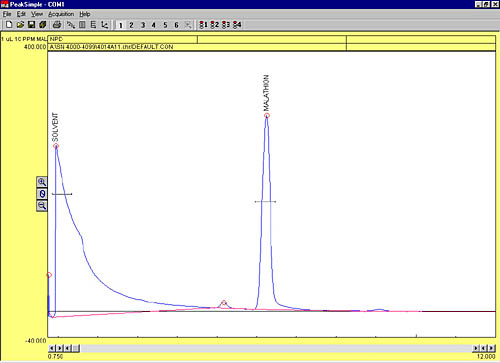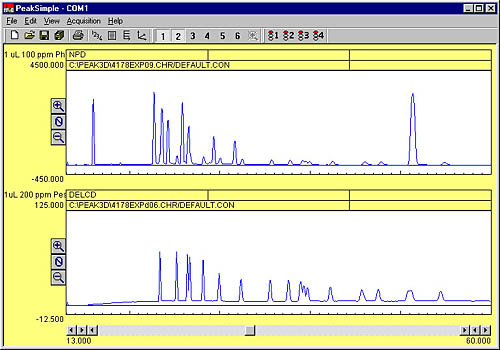|
NPD
- Nitrogen-Phosphorus Detector
|
52
|
|
 |
|
The
SRI ceramic NPD bead is exceptionally rugged and long-lasting, offering
service from 100 to 1000 hours, depending on operating conditions.
|
The Nitrogen-Phosphorus Detector responds to nitrogen-phosphorus compounds about 100,000 times more strongly than normal hydrocarbons. Due to this high degree of selectivity, the NPD is commonly used to detect pesticides, herbicides, and drugs of abuse.
The NPD is similar in design to the FID, except that the hydrogen flow rate is reduced to about 3 mL./minute, and an electrically heated thermionic bead (NPD bead) is positioned near the orifice. Nitrogen or phosphorus containing molecules exiting the column collide with the hot bead and undergo a catalytic surface chemistry reaction. The resulting ions are attrtacted to a collector electrode, amplified and output to the data system.
 |
This chromatogram shows the NPD response to a 10ppm malathion sample. |
|
The NPD/DELCD combination detector is ideal for pesticide screening. The NPD selectively responds to the organo-phosphorus pesticides, while the DELCD detects only the chlorinated species. |
 |
| These two chromatograms show an analysis of 200ppb O-Cl and O-P pesticides. The NPD sees the phosphorus, while the DELCD sees the chlorine. |
|
8690-0015
|
NPD
detector
|
£2,728.00
|
|||
|
8690-2615
|
NPD/DELCD
combination detector
|
£5,448.00
|
|||
|
8670-0120
|
NPD
bead
|
£368.00
|
|||